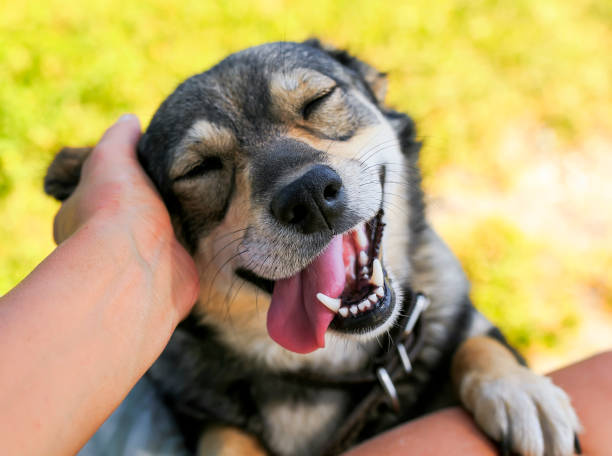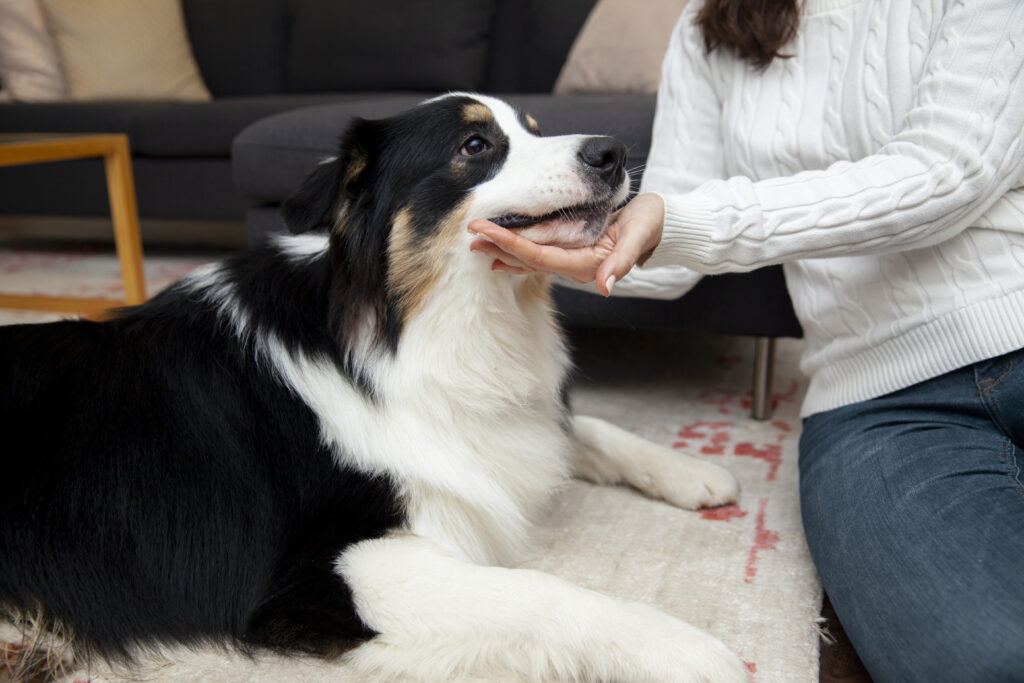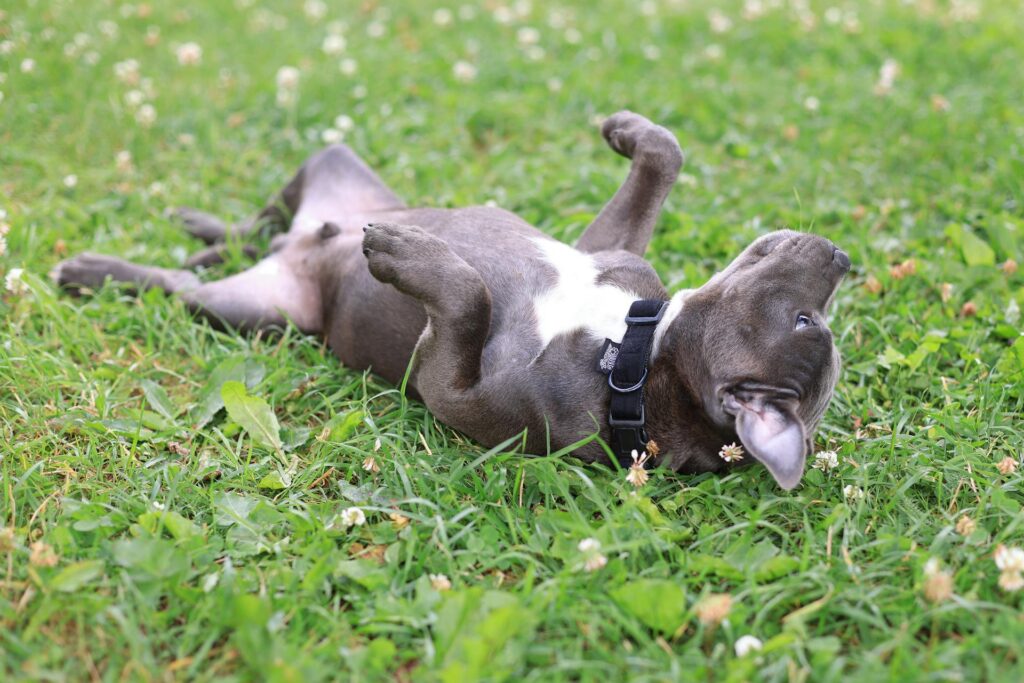
Our furry companions are full of surprises, from those zoomies bursts of energy to their head tilts of ultimate confusion. One behavior that can leave us scratching our heads (or should we say, rubbing their bellies?) is the dramatic belly flop. Why do dogs roll onto their backs, exposing their most vulnerable spot? Is it a sign of submission, pure joy, or something else entirely?
This article will be your guide to understand: Why do dogs roll on their back? We’ll explore five common reasons why dogs roll onto their backs, helping you decipher their message and build a stronger bond with your canine friend.
Here are some key questions we’ll answer:
- What does it mean when a dog rolls on its back?
- Are there different reasons why dogs show their bellies?
- How can I tell what my dog is trying to communicate by rolling over?
- Should I let my dog roll on its back all the time?
So, grab a comfy spot on the couch, cuddle up with your pup, and let’s delve into the fascinating world of canine communication!
Beyond Submission: 5 Reasons Why Do Dogs Roll on Their Backs
The classic image of a dog rolling on its back is often interpreted as a sign of submission. While this can be true in some situations, there’s more to the story! Here are five reasons why your dog might be giving you the full belly reveal:
Playful Invitation:
Sometimes, a dog rolling on their back is an invitation to play! They might be kicking their legs, wagging their tail excitedly, and rolling around, basically saying, “Come on, let’s wrestle!” This is especially common in puppies who are full of playful energy.
Also Read: Do Dogs Have Their Own Language? How Can I Understand my Dog’s Language?
Happiness and Trust:
A relaxed dog lying on its back with a loose wiggle and a happy tail wag is likely feeling content and trusting. They might be basking in the sun, enjoying a belly rub, or simply expressing their overall happiness.
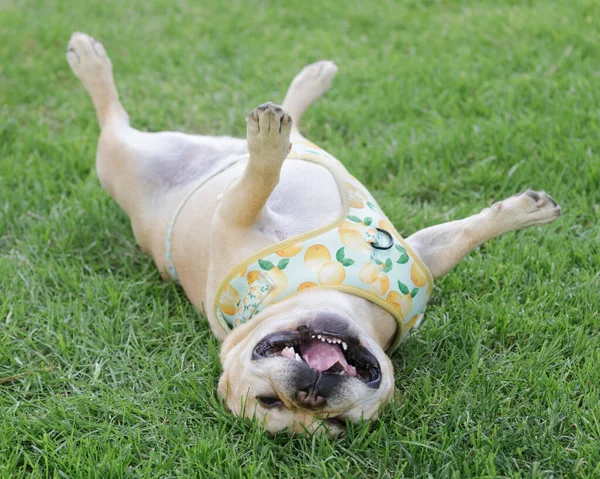
Appeasement:
If your dog has done something wrong or feels nervous about a situation, they might roll onto their back in an attempt to appease you or another animal. This submissive posture is a way of saying, “Hey, I mean no harm, please don’t be mad!”
Marking Their Territory:
Dogs have scent glands on their paws and bellies. Rolling on the ground allows them to leave their scent on an object or area, marking it as their territory. This is more common in outdoor environments.
Itching Relief:
Sometimes, a dog rolling on their back is simply trying to scratch an itch they can’t reach. If you notice them rolling on specific areas or their skin seems irritated, it’s best to consult your veterinarian to rule out any allergies or skin conditions.
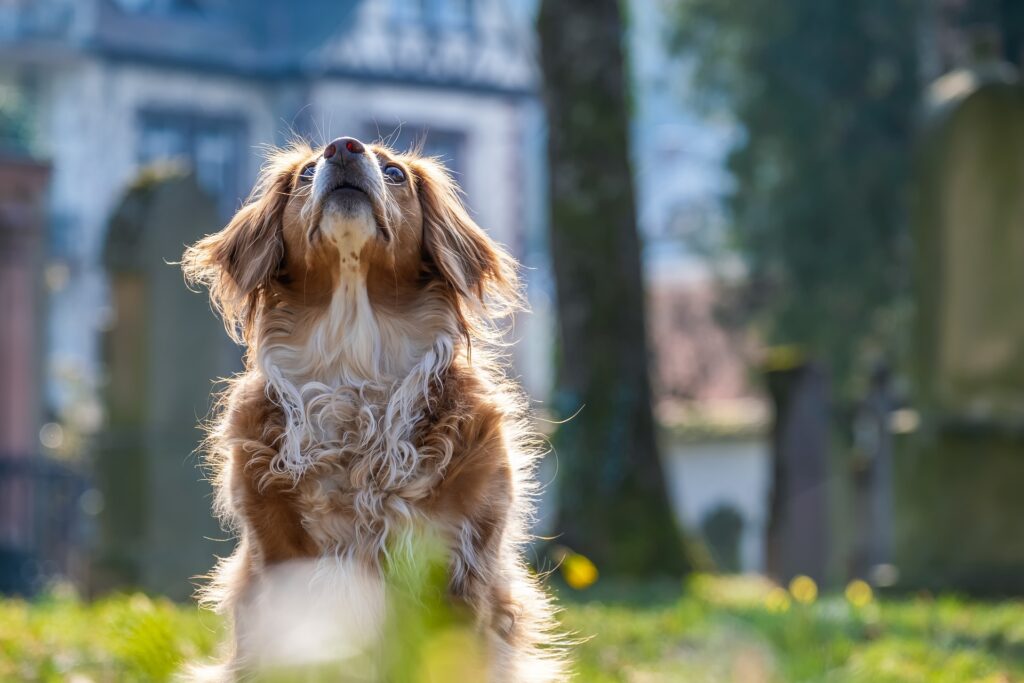
Reading the Clues: Understanding Your Dog’s Body Language
Now that you know some possible reasons behind the belly roll, how can you tell what your dog is trying to communicate? Here are some clues to consider:
- Overall body language: Look at your dog’s entire posture, not just the belly roll. A relaxed body with a wagging tail likely indicates happiness or playfulness, while a tense body with flattened ears might suggest nervousness or submission.
- Facial expressions: A happy dog will often have a soft gaze and a relaxed mouth. Signs of anxiety might include averted eyes, tucked tail, or lip licking.
- Context: Consider the situation when interpreting your dog’s behavior. Are they rolling on the grass in the park (marking territory)? Are they rolling around your feet after a walk (playful invitation)?
Belly Rub Bliss or Back Off? Responding to the Rollover
Should you always give your dog a belly rub when they roll over? Not necessarily! Here’s how to respond appropriately:
- Playful pups: If your dog is rolling playfully, join in the fun! Belly rubs, gentle wrestling, and interactive toys can be a great way to bond with your furry friend.
- Happy and trusting dogs: If your dog seems relaxed and content while on their back, a gentle belly rub can be a nice way to show affection. However, pay attention to their cues. If they tense up or try to nudge your hand away, it’s time to stop.
- Apprehensive or nervous dogs: If your dog rolls over out of fear or nervousness, avoid petting their belly. This might reinforce their anxiety. Instead, offer calm reassurance in a soothing voice and give them space.

- Itching dogs: If your dog is rolling due to an itch, address the underlying cause. Consult your veterinarian about possible allergies, skin conditions, or flea and tick infestations. Treating the root cause will provide relief and reduce the need for excessive rolling.
Respecting Boundaries: Building Trust and a Happy Relationship
Remember, not all dogs enjoy belly rubs. Some pups might find it too stimulating or even intrusive. It’s important to respect your dog’s boundaries and avoid forcing them into uncomfortable situations. Here are some tips for building trust and a happy relationship with your furry friend:
- Let your dog initiate affection: Pay attention to your dog’s body language. If they approach you for a cuddle or a sniff, that’s a good sign they’re open to interaction. Don’t force pats or cuddles if your dog seems hesitant.
- Offer alternative forms of affection: Not all dogs crave belly rubs. Show your love with gentle ear scratches, chin strokes, or a relaxing massage on their back. You can also offer praise and treats to reinforce positive interactions.
- Positive reinforcement training: Positive reinforcement training is a great way to build trust and communication with your dog. Reward good behavior with treats, praise, or petting in areas they enjoy. This will help your dog understand what kind of behavior gets them positive attention.
Also Read: 07 Major Reasons Why is my Dog Aggressive towards Other Dogs
When to See a Vet: Don’t Ignore Excessive Rolling
While occasional belly rolls are normal, excessive rolling, especially accompanied by other symptoms, could indicate an underlying issue. Here are some signs that warrant a trip to the vet:
- Constant rolling and scratching: If your dog is rolling non-stop and seems unable to get comfortable, it might be a sign of allergies, skin irritation, or parasites.
- Rolling accompanied by whining or yelping: This could indicate pain or discomfort somewhere on your dog’s body.
- Loss of fur or sores on the areas they roll on: Excessive rolling can damage the skin. If you notice hair loss or sores, consult your veterinarian.
- Changes in behavior: If your dog’s rolling is accompanied by other behavioral changes, such as lethargy, loss of appetite, or aggression, it’s best to see a vet to rule out any medical conditions.
Living in Harmony: Understanding Your Dog’s Language
By understanding the different reasons behind the belly roll and paying attention to your dog’s body language, you can create a stronger bond with your furry friend. Remember, communication is key! Respect your dog’s boundaries, offer alternative forms of affection, and consult your veterinarian if you have any concerns. With a little patience and understanding, you can build a happy and healthy relationship with your pup, belly rubs or not!
Additional Resources for the Belly Roll Mystery
Here are some additional resources that you might find helpful on your journey to becoming a doggy communication expert:
- The American Kennel Club (AKC): [invalid URL removed] The AKC website has a helpful article on why dogs roll in grass (and other interesting places!).
- The Spruce Pets: [https://www.thesprucepets.com/] This website has an article exploring the different reasons why dogs roll on their backs.
- The Association of Professional Dog Trainers (APDT): https://apdt.com/ The APDT website can help you find a certified professional dog trainer who can help you understand your dog’s unique communication style.
Remember, a happy dog is a dog who feels understood and loved. By taking the time to learn about your dog’s body language and respecting their boundaries, you can create a lasting bond built on trust, respect, and maybe even a few well-deserved belly rubs (if your dog is into that sort of thing).
05 Reasons Why Do Dogs Roll on Their Backs: FAQ
Is your pup a champion belly roller? This FAQ section will answer ten frequently asked questions to help you decipher the message behind your dog’s dramatic back flop:
- Is rolling on their back always a sign of submission?
Not necessarily! While a dog rolling onto their back with a tucked tail and flattened ears might be submissive, a relaxed roll with a wagging tail often indicates something else entirely.
- My dog rolls playfully on their back with their legs in the air. What does that mean?
This is a classic doggy play invitation! They might be inviting you to wrestle, chase them, or just have some fun together.
- My dog rolls in the grass all the time. Are they trying to get dirty?
Dogs have scent glands on their paws and bellies. Rolling allows them to leave their scent on an object or area, marking it as their territory. This is more common in outdoor environments.
- My dog rolls on the carpet after getting a bath. Why would they do that?
There are a few possibilities. They might be trying to remove lingering shampoo smells (not a big fan of your fancy bath products!), or they might simply be happy and rolling to express their joy.
- Should I let my dog roll on their backs all the time?
It depends! If your dog is rolling playfully and seems happy, it’s perfectly fine. However, if they’re rolling excessively due to itching, anxiety, or another issue, you’ll want to address the underlying cause.
- My dog only rolls on their back when they’re scolded. What does that mean?
Some dogs might roll over in an attempt to appease you after they’ve done something wrong. It’s a submissive posture that says, “Hey, I’m sorry, please don’t be mad!”
- My new puppy rolls on their back and exposes their belly all the time. Does that mean they trust me?
Puppies often use rolling as a way to play and interact with other dogs. While it can be a sign of trust, it’s important to pay attention to other body language cues to understand your puppy’s true feelings.
- My dog rolls on their back after eating. Are they full and happy?
Perhaps! Rolling can be a sign of contentment and relaxation. However, some dogs might roll after eating due to nausea or stomach discomfort. If you’re concerned, consult your veterinarian.
- My dog rolls constantly and seems itchy. What could be causing this?
Excessive rolling could be a sign of allergies, fleas, ticks, or other skin problems. Consult your veterinarian to rule out any underlying medical conditions and get appropriate treatment.
- How can I tell the difference between a playful roll and a nervous roll?
Look at your dog’s overall body language. A playful roll will be accompanied by a relaxed posture, a wagging tail, and happy energy. A nervous roll might involve flattened ears, tucked tail, and averted eyes. Consider the situation too. Are they rolling playfully after a walk, or are they rolling out of fear during a thunderstorm?
